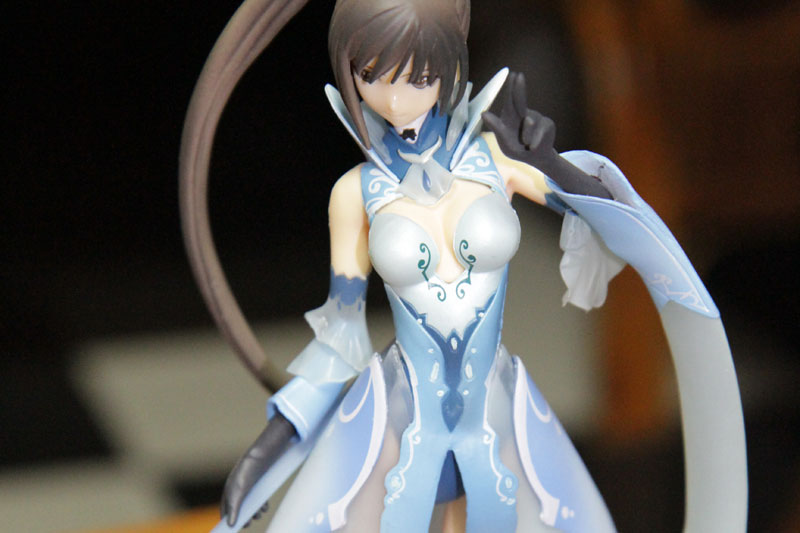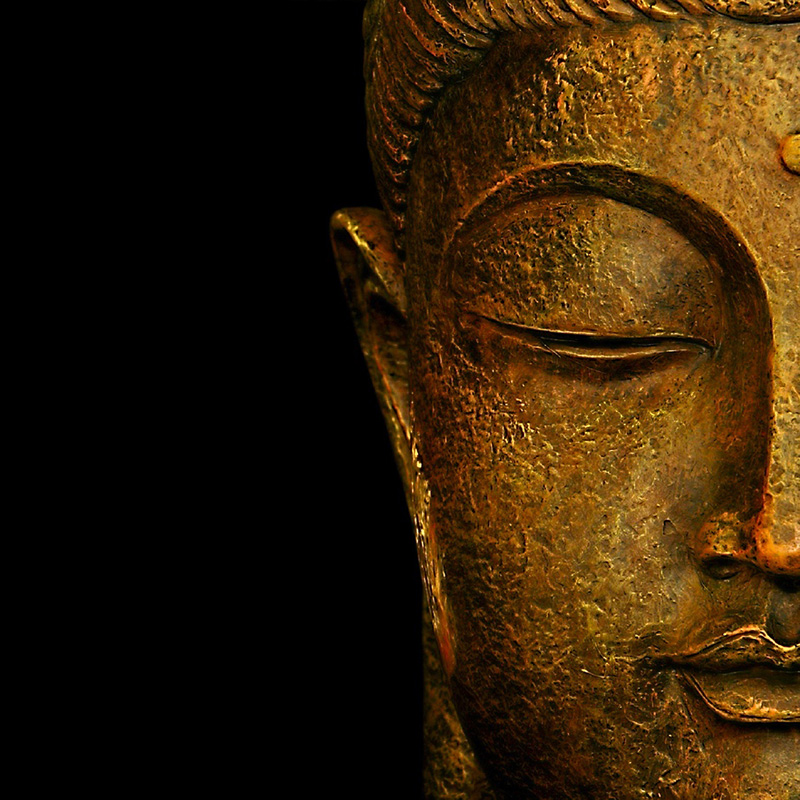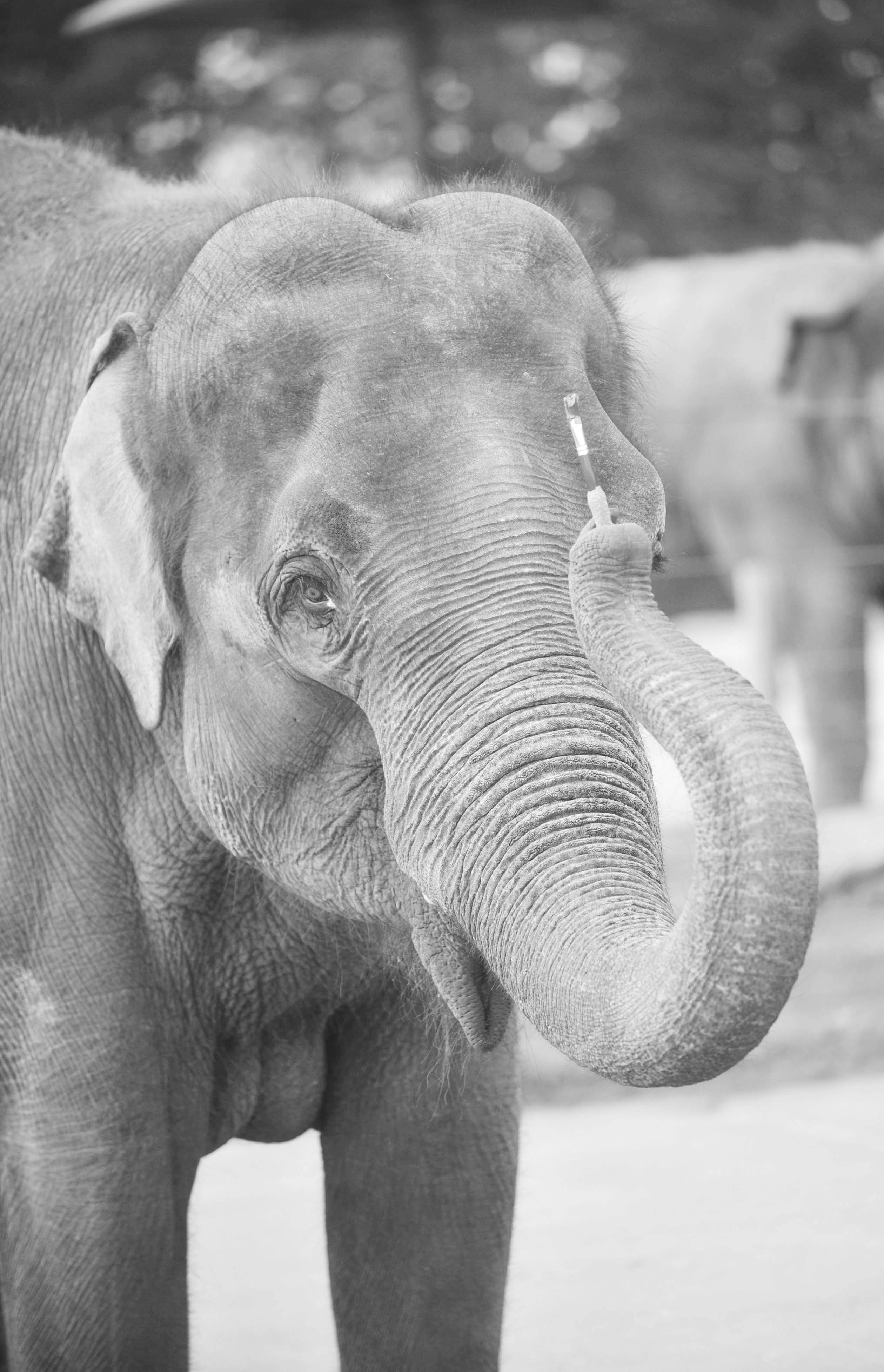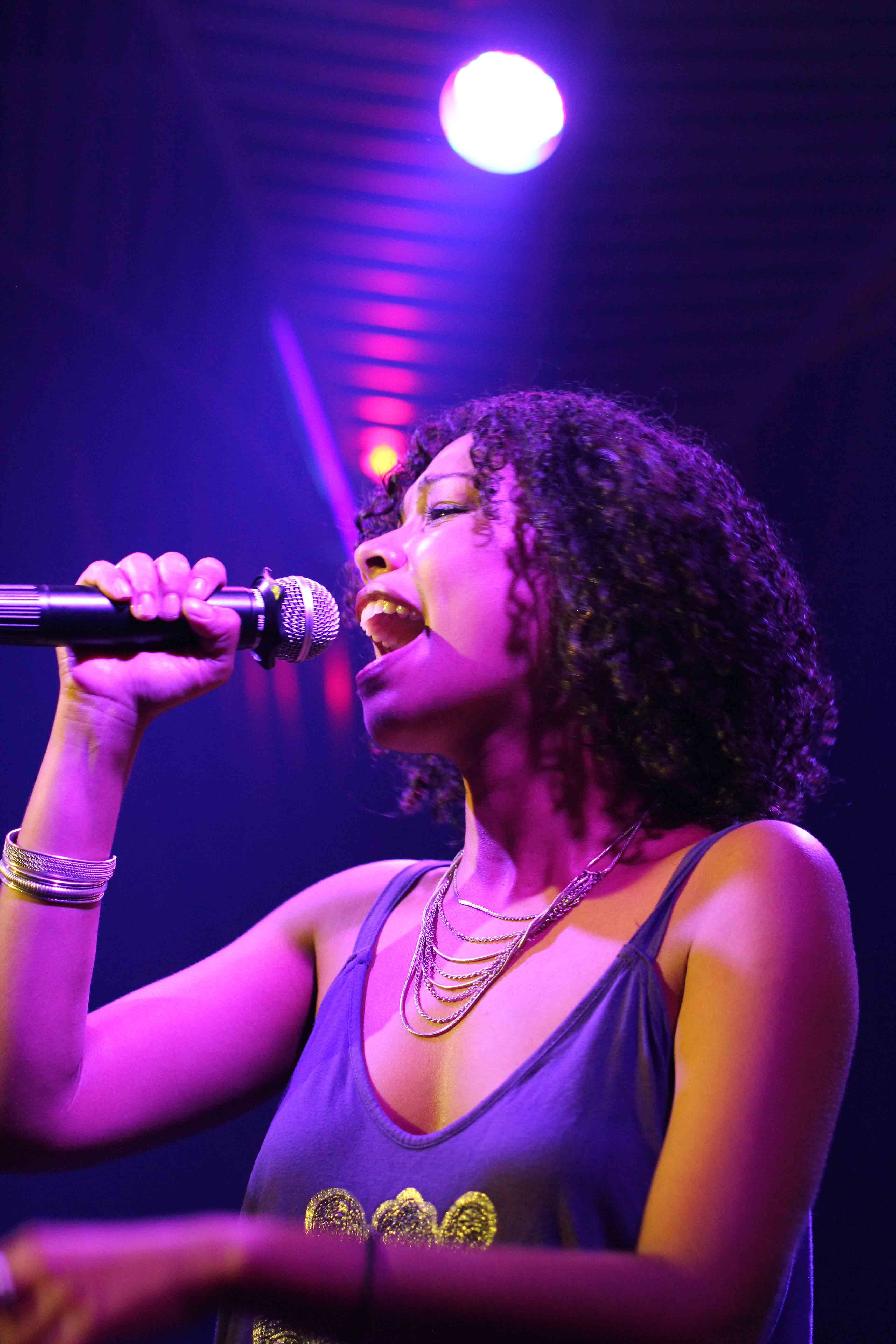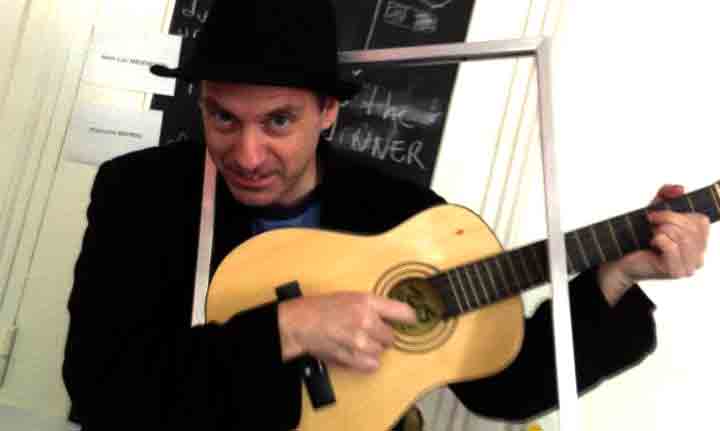THE SPECKLED FEATHER woven into her hair has a certain hypnotic effect. When she speaks, a sound like waves lapping against a shore, the feather dances a delicate dance between beach-burnished blonde and brown strands. Before you know it, your very DNA is exhaling deeply – the stresses and strains of normal existence snuffed into silent nothingness.
Am I on drugs? Not right now, no; although the atmosphere here is intoxicating aplenty. For here in the soporific suburbs of Sangkat Boeung Tumpun, in a white boat-shaped house filled with nautical paraphernalia, is a place designed to help both the creatively inclined and the existentially damaged navigate their way through life’s oft-stormy seas. Inspired more by humanity’s potential than by any formal belief structure, Ragamuffin Boathouse is ‘a sanctuary in the heart of the city for arts therapy, creative innovation and social change,’ says co-founder Carrie Herbert (she of the hypnotic feather), and it’s opening its doors to similar spirits with the launch of a new ‘creative hub’ on World Music Day.
Beyond the bougainvillea at its gate are heart-shaped ponds filled with rainbow fish, portholes in place of windows, and crunchy pebble paths. And everywhere greenery: vines, palms, blossoms. Inside: curved walls, long loops of nautical rope, aqua-hued cushions, an ‘intimate garden cafe’ and not a single sharp corner in sight. Brought into being by British art therapists Herbert and Kit Loring, Ragamuffin also has a base in Russia and has recently worked in Mexico, Kazakhstan, Hong Kong, Thailand and India. Its maxim: Here in Phnom Penh, this pseudo ship’s resident creatives include everyone from an environmental writer to the ‘innovation human design team’. Arts therapy? Wilderness therapy? Music therapy? Check, check and check. Drop in. Join the choir. Rent a workstation. Become part of the crew. As Ragamuffin Boathouse readies for launch on World Music Day, co-founder Carrie Herbert talks wings, jamming with whales, and the meaning of life, the universe and everything.
This month marks not only the launch of the new concept, but also the start of Euan Gray’s Ragamuffin Lighthouse Studio on the top floor.
We’re looking for 10 Cambodians who write original songs and we’re going to take them through the whole process here. The outcome will be to have mastered 10 songs, then record and launch the album. It’s a very therapeutic process: it’s about enabling people to go deep within themselves; to write really solid songs. That’s the real strength of what Euan does and the whole process we have here, our philosophy: allowing people to access the depths of their creative potential in a safe environment. We’re seeing that already in some of the kids who come here and the quality of their stuff. We have a little rock star who’s only about nine. She’s amazing; you should hear her sing! She’s really cool.
The word ‘safe’ fits well in this space.
It’s interesting you point that out: it’s not just safety in terms of the environment and the atmosphere; it’s safety on every level of being. I don’t like the word ‘psychic’, but it’s a kind of spiritual, emotional and environmental sense of creating safety and that’s at the essence of what we do and who we are. If I’m not able to be that, then I can’t replicate it and instil it in others. By modelling being safe and being a therapeutic being, which is fully human – and what I think is so liberating; not the denial of our vulnerability but the embracing of it – that gives people permission to be themselves and to discover who they really are and to feel safe. When someone feels safe, they have the possibility they can be themselves or at least begin to learn how to trust again.
Here’s a leftfield question for you: tell me about your childhood.
[Laughs] Do I need a couch? I grew up in South Wales, about an hour from Cardiff and 20 minutes from a beach in a little village. I grew up among a lot of nature: I surf, I do sports. There’s this thread of spirituality that’s woven through in all sorts of shapes and forms since I can remember; that’s always there. I know that’s taken me through all sorts of journeys in life and fostered something of what it means to be safe.
And you met your partner, Kit, when he moved from London to Wales and you got involved with a care centre he was rejuvenating.
I said to him: ‘What was the original vision? Show me.’ And he brought out all these old deeds from the 1950s and set them up in the ward and invited people who’d been orphaned or traumatised to come. It was really radical: the vision was to train them up in this new world order and they would go to France and build new villages. The core belief for the whole centre was ‘healing broken minds and shattered souls’. I just cried. It completely touched me in the deepest place. I said: ‘When can I start working for you?’ That was it; that’s what I’d been looking for. We had a great synergy. It just felt right. And it was after that we set up Ragamuffin.
Where do you hide your wings? Do you take them off during the day?
[Laughs] That’s a secret! I love wings, actually. I’d love to fly; that would be amazing. It would save a lot on flipping air tickets, wouldn’t it? I went swimming with whales recently in Maui and it felt so harmonious: midnight, incredibly coloured water and deep, deep, deep, these whales.
Experiences like that help reset the soul.
Totally! And out on the sand, when we got out of the water, these musicians were playing and the whales were playing back.
There’s a book called The Beluga Cafe: My Strange Adventure With Art, Music And Whales In The Far North, by Jim Nollman. Read it. This guy drops waterproof speakers into the ocean and whales actually harmonise with live musicians.
This is what happened to me! People were saying ‘Let’s jump in!’ They put microphones in the water and I’d never heard whale song in real life. It was so loud because we were surrounded by pods of whales. I was streaming! I picked up my soprano saxophone and played and they were playing back! It’s one of the most transformative experiences. I was flying out to Korea just at the time they announced the war and as I was leaving I thought:s ‘What are we doing in this world?’ When you’ve had something that’s in such harmony with nature, to see how all over the world there is the opposite. There was a sense of being in harmony with the universe and the natural order of things and how that can create the potential for us to realise – and be conscious about – who we are and how we can be in harmony with everything. So much distress and suffering and pain is caused by everything that’s in conflict with that. I feel we could learn so much from the natural order of the world. Then I went from Seoul to work in Kazakhstan, which was like another planet in terms of creativity. They’d been through so much, just like here, and it was fascinating to see how much creativity exists in that country. Of course there’s destruction in nature too and how can that live in the natural order? It’s all out of kilter… What was the question?
What’s the answer to life, the universe and everything – in 25 words or less?
[Laughs]
But seriously, walking into Ragamuffin Boathouse feels a bit like walking into a giant hug.
That’s such a nice thing to say! Kit often talks about a ‘giving hug’ rather than a ‘taking hug’. That’s what it feels like. Imagine if you could build houses like this all over Cambodia. That would be so cool! I’d love to see that happening, where the environments we live in ‘receive’ people in a way that’s really restorative. It creates the possibility for anyone to find creativity. When I was talking to the builder about the kind of energy we wanted to put in each room, he got really into it. He said: ‘Carrie, I’ve got a surprise for you.’ He’d carved a lotus flower of concrete in the bathroom. I just love what it brings out naturally. When we work very deeply with traumatic issues, it can hold that range: both the sheer joy of creating and a celebration of that, into the darkest parts of humanity. You joke about wings but that’s why we’re using ourselves as an instrument of this work. We’re using all of our humanity: ‘If I haven’t gone into the darkness myself, I can’t walk with someone else.’ It’s challenging: the art of being human and creative and open in an environment like Cambodia where I too hate the traffic, like everyone else, and there’s so much suffering. It’s corrosive to our resilience – everyone, not just expats. People ask when we’re going to run a course on dealing with stress brought on by traffic, which I think would be fantastic – a very cathartic experience. I’m thinking baseball bats and bean bags.
[Laughs] Nice! Now, how would you describe the hub in a nutshell?
We’ve renamed the centre the Ragamuffin Boathouse: it just felt really smiley. Come and join our adventure! It’s got a playful feel to it. A friend said: ‘It’s a learning lab. Write it up and take it to Oxfam. If you can articulate the model of what you’re doing, it could really captivate all sorts of organisations to rethink how they’re going to survive, because funding is drying up.’ It’s strong snd it could really ignite people. What I really want is to awaken people, to get them thinking about how they’re going to be sustainable. The BBC came here and they designed a whole programme in sand trays during a creative dinner. Now it’s a reality. Teams can come here and tap into this creativity and then who knows what?!
So what would you say is at your core?
Recognising that vulnerability isn’t a weakness, which we’re often so conditioned to believe – whether it’s an emotional state that we judge as being not strong, like tears or anger, but also that sense of being OK with going into the unknown; OK with looking at what’s within our deepest fears. Learning to feel safe enough – there’s that word again – to go into those places, knowing there are things to be found there. There are lost things to be reclaimed and there’s energy and light and beauty and a sense of peace and freedom so often beneath the energies we’re avoiding. When we first got here we were told – interestingly by a lot of expats – that ‘Cambodians don’t do emotions.’ Having worked with refugees before, I thought: ‘I’m going to find out for sure.’ What we found – again and again and again – was that as soon as people feel safe, as soon as they have permission and feel a sense of not being able to go wrong, it liberates them. What was so important when we came here was not imposing our own culture and that’s what’s so brilliant about working with the arts: when the arts are totally owned by the artist, you can’t interfere with it and it gives such scope for people to express themselves in a way that’s true to themselves, with all the cultural reference points and symbology they want. I love that. The way we train people to work, you’re removing yourself to make space for the other – and at the same time you’re in a dynamic relationship.
Bloody Hell! Can you draw that in a diagram?
[Laughs] It’s like not interfering by imposing who you are; creating this space so that a person can find out who they are.
Or, to borrow from The Eagles, Learn To Be Still.
Absolutely, yeah! This sense of stillness, it’s like meditation; a sacred space. The human soul, spirit and being within us wants to grow and the less we try to impose something on that but rather create the environment, the energy and the safety that supports and understands that, the better – whatever dark alley, back alley, or locked room you need to go to in order to create a sense of freedom of being. I’ve learned it especially from people in extreme situations. I’ve worked with people from really serious conflicts, but I’ve not been through that experience myself: this place of utter despair, where everything is black. No hope at all. I can’t make it better; I can’t say: ‘Turn the light on and everything will be OK.’ I find the times when you’re fully present, even when you can feel the energy of the disturbance, these little miracle moments happen: the creative process ignites someone’s hope again, even in the tiniest form. You absolutely have to stay with them. It always blows me away; it touches you so deeply.
What’s wrong with humanity and how are you going to solve it?
We’re so conditioned to think we’re separate. As soon as we realise that we’re bound by the same energy… I don’t think we’ve gone anywhere near the possibilities. I was listening on the radio about brain research all over the world; it’s really fascinating, a lot of money going in. It’s like the human genome project, but a brain version. We’re not really tapped into the full potential of humanity because we’re so conditioned to think in these ridiculous ways. I’m curious as to what it’s going to be like for those working here: we’ve got an animator, we’ve had a filmmaker, we’ve got this I-Lab who are all overseas at the moment doing innovation in design and technology stuff. It feels like, wow! What are they going to get from being in a place with this ethos? How can we help expand their creativity? How can we find out what that looks like? The idea for this hub is to create the concept not just of people coming and working here, but coming into this ethos and the energy of Ragamuffin and benefiting from the community that’s moving and evolving and growing here. I’m fascinated by what it’s going to ignite in them.
How do you find people, or do they find you?
At the moment it’s a word-of-mouth thing, which is why we’re publicly launching this month. ‘This is what we’re doing. Do you want to come and join our adventure?’
‘We will take over the world and turn it into a jolly nice place, whether you like it or not.’
[Laughs] I should do that, shouldn’t I? We’ve got our Ragamuffin projects; our Kaleidoscope Collective – four people who have a creative affinity, so it’s a chance to both work independently and collaborate. Then we have the broader hub which is open to start-ups, people running things like this I-Lab – they do creative engineering for tangible needs, such as ceramic water filters. Then we rent out extra space. We’d love a community playground and an organic cafe, too; they’re on the list of possibilities if we can find a benefactor. I just wrote a book chapter on this very thing: psychological safety and what that means. How do we foster that and how do practitioners sustain themselves when they’re working with victims of violence and trauma?
Being exposed to such horrors must take its toll. Can art really alleviate that?
I was talking recently to a photographer who is – and knows many others – working in war zones. We do a lot of work debriefing people working in really heavy situations and helping them to look at how they care for themselves. Without that, it’s not possible to sustain working in these difficult areas. Who cares for carers, the staff working in the field? There has still not been any research on this in Cambodia. Wouldn’t it be great if we got together in a stadium everyone who’s helping others in some shape or form? Think about how many people that must be. If you got that group together as a collective, almost as an antidote for media that constantly talks about suffering – that’s why I like The Advisor, it’s like medicine – it’s amazing what these unsung heroes are doing. These universal languages – the arts, science – it’s humanity; it’s what brings people together. That’s why I love working with refugees. We had a project in the UK working with people from border areas such as Iran-Iraq; India and Pakistan; tribal areas in the Congo – all in the same room, with four or five translators. It was mayhem because of course they’re bringing all their conflicts with them. At the start I thought: ‘How is this going to work?!’ But the creative process – not quite magical, but unexpected – these two women from the India-Pakistan border, who’d lost everything and everyone, were drawing pictures and we put them on the floor. We talked about them then we joined them up – and the mountain ranges literally joined up. There was this moment of stillness; it spoke for itself. They both realised and they both cried. We’re all the same underneath, under the skin; we’re human. It brought them together; it was a really healing moment. It’s like reconciliation.
